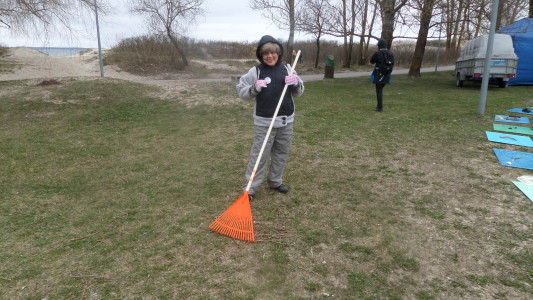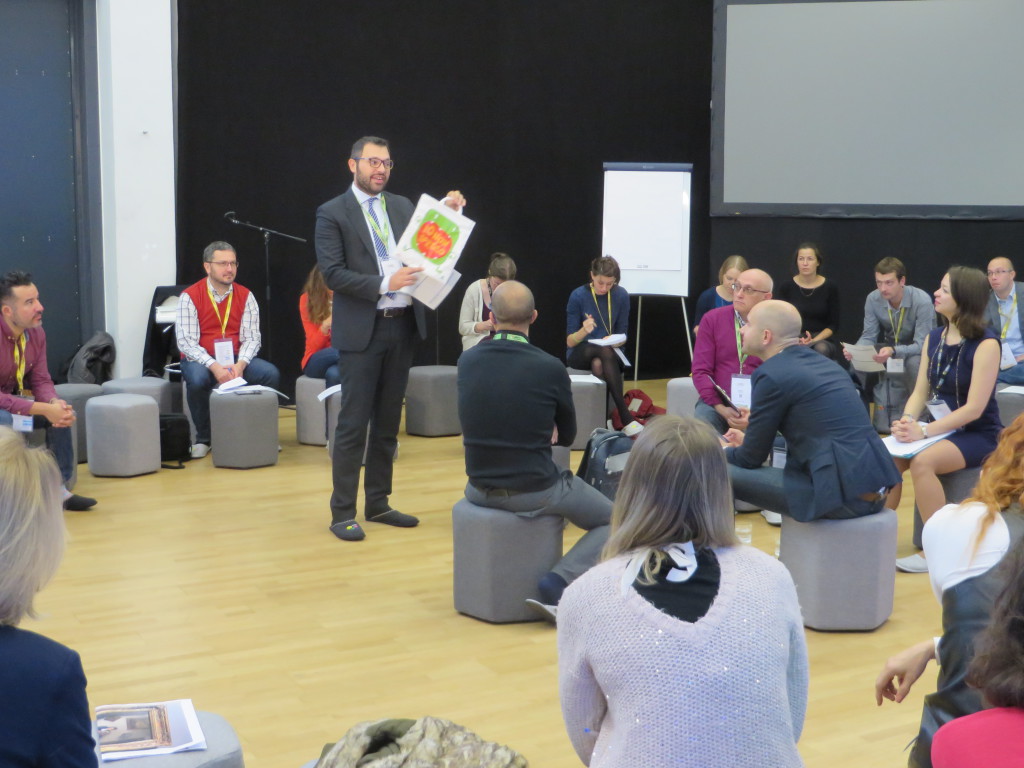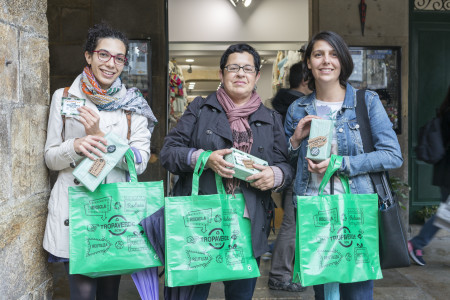Striving towards sustainability together
The occurrences and types of events and catastrophes related to climate change (environmental , biodiversity, human, social or societal concerns) have been constantly increasing for more than a century and especially in the last decades. Although these are mostly observed at meta level, it is a local level that both public authorities and citizens should act to implement and undertake concrete actions for a wide societal change. Some URBACT Good Practices understood it quite well and are developing not only sustainable strategies that are local and concrete, but also participatory ones: this is what Manchester (UK), Santiago de Compostela (ES), Milan (IT) and Tallinn (EE) addressed during the “Together for sustainability panel” of the URBACT City Festival held in Tallinn, Estonia on 5 October 2017.
The incremental integration of citizens in sustainable policies
Sustainability has been promoted as a concept since 1987. Since then, the integration of the three pillars of sustainable development –the economic, social and environmental pillars – have slowly become mainstream in most fields. By moving from its niche, the concept is now widely accepted. Yet, it has lost its main component of paradigmatic change. As such, other approaches, which are still alternative, promote integration beyond the three pillars: with the integration of other pillars – such as culture or health – as well as with approaches relating to transversality, permaculture or transition models.
“Environmental issues are best handled with participation of all concerned citizens, at the relevant level.” The principle 10 of the Rio Declaration was already pointing to the needs to modify the methodology for addressing this global change, and more specifically with the inclusion of citizens by providing them with access to information, as well as the opportunity to participate in decision-making processes, encouraging public awareness and participation by making information widely available. Participation, engagement, co-creation, and empowerment are stressed by other policies and declarations: the UN Secretary-General’s High-Level Panel on Global Sustainability, the Sustainable Development Goals, the New Urban Agenda, the Pact of Amsterdam and the Urban Agenda for the EU, various national, regional and local policies.
How can behavioural change be supported?
This concern is high on the political agenda. Indeed, sustainable development requires citizens to be implied individually or collectively, since as Olivier de Schutter states “behavioural changes which rely on intrinsic motivations of people will be resilient as they will become part of the identity of the concerned individual”. Beyond the traditional linear, top-down approach mostly adopted by public policies from psychological and psychosociological backgrounds, and which have shown their limits, more recent analytical frameworks enable addressing the issue of sustainable behaviours from a practice approach, embedding them in a realm of objects, abilities and knowledge and values that make them possible. Such an approach takes away the blame too often put consumers for their non-sustainable practices, to shift the approach towards more constructive, participatory and co-created projects. Manchester (UK), Santiago de Compostela (ES), Milan (IT) and Tallinn (EE) have sought to address it each in their own way.
“BEYOND A TOP-DOWN APPROACH, WE NEED TO EMPOWER CITIZENS”, Jonny Sadler, Manchester
The debate over where actions towards more sustainability should happen has now been going on for decades: should they be top-down, i.e. coming from public authorities, which could imply a strong control and command position from institutions; or bottom-up, i.e. coming from citizens and local initiatives, which could lead to a lack of structure. Beyond this oversimplification and caricature, what the Good Practice from Manchester “Culture for Climate Change” showed, as presented by Jonny Sadler, Programme Director at the Manchester Climate Change Agency, was that each of the stakeholders concerned and engaged in this process should play its part: public authorities, agencies, businesses, NGOs and citizens, each is responsible and has competences at his/her own level. In this Good Practice, the multi-level governance approach has taken the form of a strong engagement with and cooperation of local arts and culture NGOs: through the setup of the Manchester Arts Sustainability Team (MAST), Manchester City has worked with 30 organisations since 2010 to develop innovative ways to engage and inspire citizens in acting on climate change. This is only through such an approach that real co-creation can happen, not only for the sake of the process but also to ensure adequate implementation.

“WE NEED TO REWARD CITIZENS FOR THEIR ACTIVITIES”, Gennadi Gramberg, Tallinn

Citizens taking part in these processes do so because they are strongly bound by the values they are promoting for and acting for. Yet, a friend of mine was recently asking – rather, wondering : “who is going to say “thank you” for what I am doing although there are so many people who don’t do anything, worse, who don’t care about deliberately deteriorating our planet”? The Good Practice “Spring Clean-up Campaign”, presented by Gennadi Gramberg, Head of Environmental Projects and Education Division of the Tallinn Environment Department, stressed the need to reward citizens, notwithstanding the positive energy and atmosphere citizens gain from the experience. The campaign for cleaning salt from streets, planting trees and flowers, picking up litter from Baltic beaches has already taken place 26 times. The actions are visible, concrete and are presented as festive events, including with tea and porridge. In addition to seeing their city being cleaned up and having an enjoyable moment, what citizens really appreciate are the badges they receive and can collect on their jackets: like a soviet hero, with a feeling of acting positively for society.
“CHILDREN ARE A KEY (RE)ACTOR FOR SUSTAINABLE PRACTICES”, Marco Mazziotti, Milan

In terms of Sustainable Food Policy and activities, Milan is very well known. It is for both its strategic and operational activities that the city has been labelled as a Good Practice under the “Food for Cities” project. It is with a plastic bag on which “Io non spreco” (I don’t waste) was written that Marco Mazziotti, Head of EU Affairs, Foreign Affairs Department at the City of Milan Mayor’s Office, explained one of the very concrete activities it has carried out within its – now international – Urban Food Policy Act: a work on food waste in school canteens. By addressing children, the project sought to get a double impact: on them and on their parents. It did so by providing plastic bags to children to take home the leftovers from the school canteens. This was in turn included in the wider City Strategy towards more sustainable food strategies – in the whole urban cycle of food (production, processing, logistics, distribution, consumption, and waste. In order to make participation possible, the City of Milan adopted a quadruple helix approach throughout the whole strategy development and implementation.
“INCENTIVISATION CAN SUPPORT BEHAVIOURAL CHANGE”, Miguel Varela Perez, Santiago de Compostela

Playing is also a strong driver for change and that is what Miguel Varela Perez, CEO at Teimas Desenvolvemento in Santiago de Compostela, showed via the “Tropa Verde Rewarding Recycling” Good Practice. The whole project was based on the responsibilisation of the citizens in adopting recycling attitudes but also towards more circular ones. By recycling the citizens receive tokens they can exchange for sustainable – non production intensive – gifts, such as public transport tickets, haircuts, or meals. By working with local shops, the Good Practice integrated the activities in the daily lives of citizens, making it easy, interactive and “fun” to participate. This also had a spill over effect on other activities of the local shops and wider behaviours of citizens.
What can be transferred from these URBACT Good Practices to other cities?
Many European cities struggle with the way to address sustainability at their level. Many still do it in a vacuum, by adopting a traditional approach of designing local public policies and services, addressing citizens but not necessarily including citizens in this process. The Good Practices presented above propose a few elements that can be transferred to other cities in supporting them to operate this change:
- Projects on sustainability can cover a wide range of topics: climate change, energy performance, cleaning and waste management, (Right to) Food, recycling, and many more;
- The projects can apply to different spheres of activities: arts and culture, policy-making, entrepreneurship, and/or citizenship;
- The aims of the projects can be a search for: empowerment, awareness-raising, visible impact on city, vision setting, alternative economic systems and/or international cooperation;
- Working together with relevant stakeholders and citizens in order to design and implement the adequate strategies and tools. Such stakeholders can be: citizens, businesses, schools, entrepreneurs, and/or policy-makers;
- Citizens can be engaged through: awards, gamification, awareness-raising campaigns, “Commando” campaigns, cultural events and/or project development opportunities
- The Municipality can adopt the approach that suits best its project, culture and available resources: that of coordinator, facilitator, driver or moral authority;
- The projects can take different forms of labs: Living Lab, Innovation hub, Climate Lab, and/or Multimedia lab;
- The projects can be funded by municipality’s budgets, private foundations and/or sponsors
- The projects can lead to a policy strategy, urban renovation, civic Crowdfunding platform and/or hands-on activities
These Good Practices also teach the way to present their project in a way that is engaging for their citizens, their administration but also beyond, adopting a positive and constructing attitude towards their effort for greater sustainability.
Reposted from the URBACT website.
